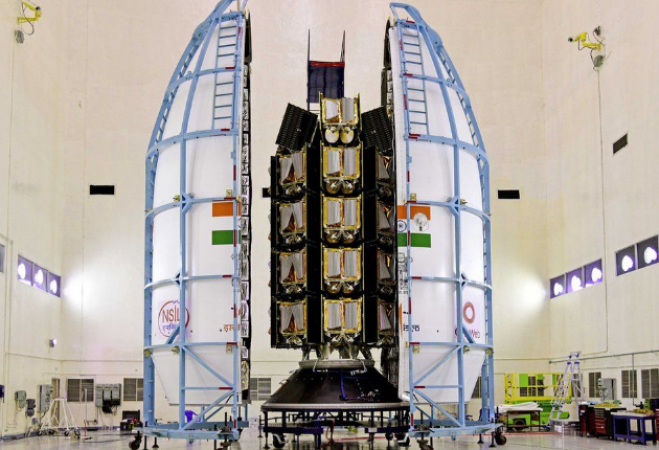
SriHari Kota: The LVM3-M3/OneWeb India-2 mission is scheduled to launch on 26 March. During the mission, 36 OneWeb Internet satellites will be launched into orbit using India's most powerful launch vehicle, LVM-3 (Launch Vehicle Mark).
The upcoming launch, if successful, will place the satellites in Low-Earth Orbit (LEO), completing the deployment of the 582 satellite constellation owned by the UK-based company.
Following the conflict in Ukraine, OneWeb postponed the launch of 36 broadband satellites on a Russian Soyuz rocket in March last year.
Also Read: The equinoxes in late March and late September are the best times to see auroras
After that, the business hired ISRO to launch 72 satellites in two phases, reportedly at a cost of around Rs. 1,000 crores. With the upcoming launch, OneWeb will have more than 600 satellites, putting it on track to introduce broadband Internet services to the entire world.
On March 26 at 9:00 am IST, the Satish Dhawan Space Center (SDSC), Sriharikota, will launch 36 OneWeb satellites. OneWeb will use ISRO's satellite launch services for the second time.
On October 23, 2022 ISRO launched the first batch of 36 OneWeb satellites from Sriharikota as part of the LVM3-M2/OneWeb India-1 mission. This was the first commercial launch of LVM-3.
Also Read: A new version of WhatsApp for iOS beta was recently released
The upcoming launch by ISRO's LVM3 will mark the 18th launch of OneWeb. 40 Internet satellites were launched into orbit by a SpaceX Falcon-9 rocket during the company's 17th launch, which took place on March 9.
The previous name of the launch vehicle, GSLV Mk-3 (Geosynchronous Satellite Launch Vehicle) has been changed by ISRO to LVM-3. The naming of names is necessary because the rocket will place the OneWeb satellites not in geosynchronous orbit but in Low-Earth orbit (LEO).
The geosynchronous orbit is located 35,786 km above the equator, while the OneWeb satellites operate in low-Earth orbit at an altitude of 1,200 km.
Unlike traditional methods, which use satellites placed in geostationary orbits (GEO) above the equator, OneWeb uses satellites in low-Earth orbit (LEO) to provide broadband Internet access.
NASA launches new spacesuit specially tailored for lunar wear
According to GSMA Intelligence, LEO satellites, which are placed in orbits between 200 and 1,500 kilometers above Earth, greatly expand bandwidth and reduce space latency to just 50 to 70 milliseconds.
Later this year, OneWeb intends to launch its services in India. The Department of Telecom has granted GMPCS (Global Mobile Personal Communications by Satellite) license to the company and allowed them to proceed to build the earth station.
The Department of Space needs to give additional permission. We intend to launch services worldwide by the end of this year, said a spokesperson.